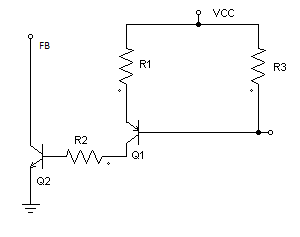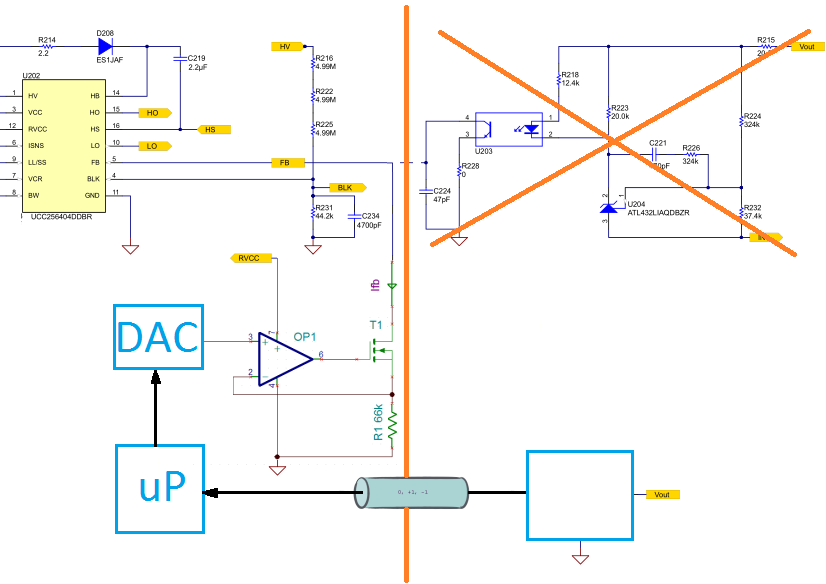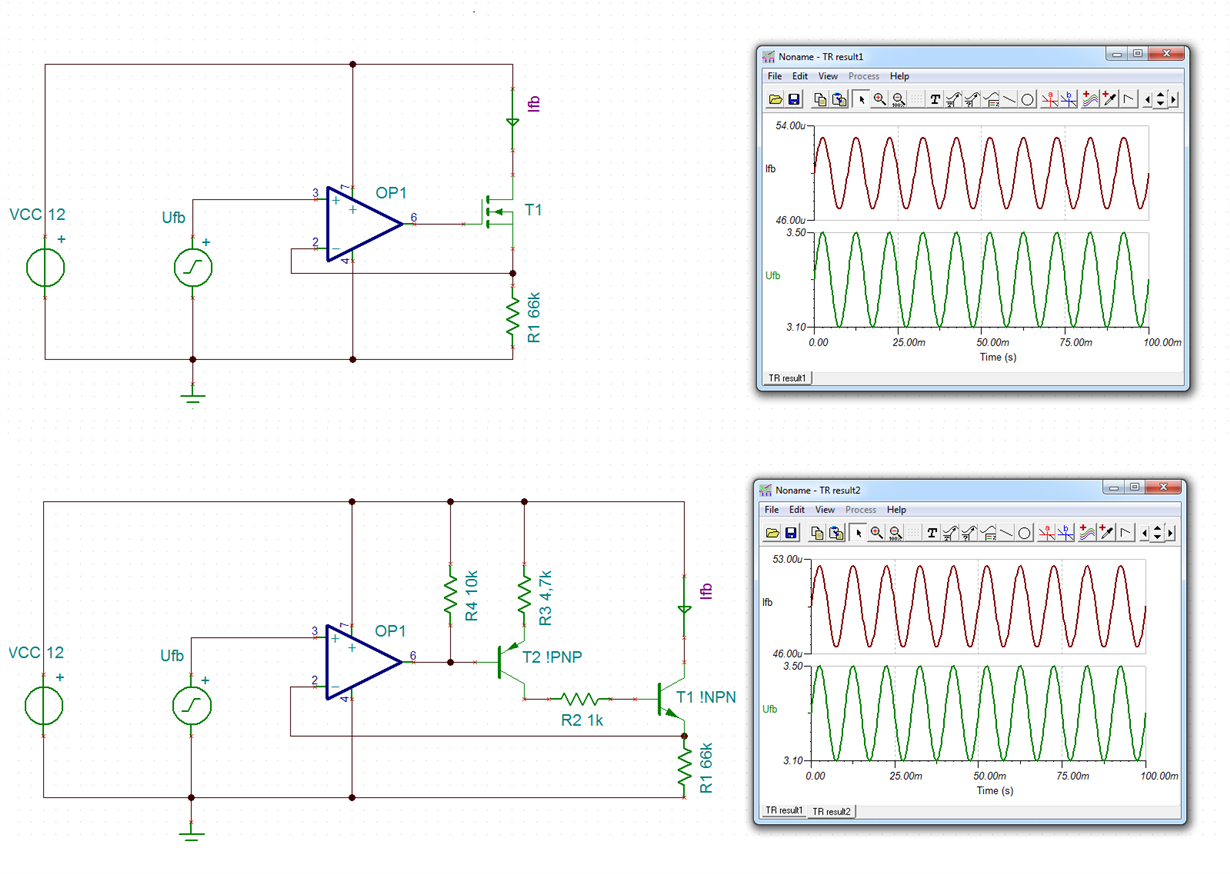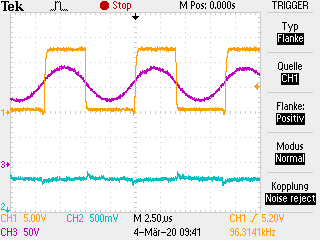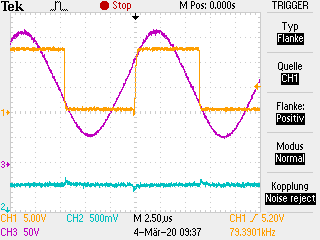Other Parts Discussed in Thread: TL432, TL431, TINA-TI, UCC25600
I'm thinking about using the UCC256404 in my current design.
Because of mechanical restrictions I can't implement a
direct feedback from secondary side using an optocoupler
and TL432. I've an indirect signal, which is higher than
3,3V on positive deviation and lower than 3,3V on negative
deviation of the secondary side voltage.
With images circuit I want to translate the feedback
voltage to a current feeded into UCC256404s FB pin by
connecting drain of T1 with UCC256404s pin 5.
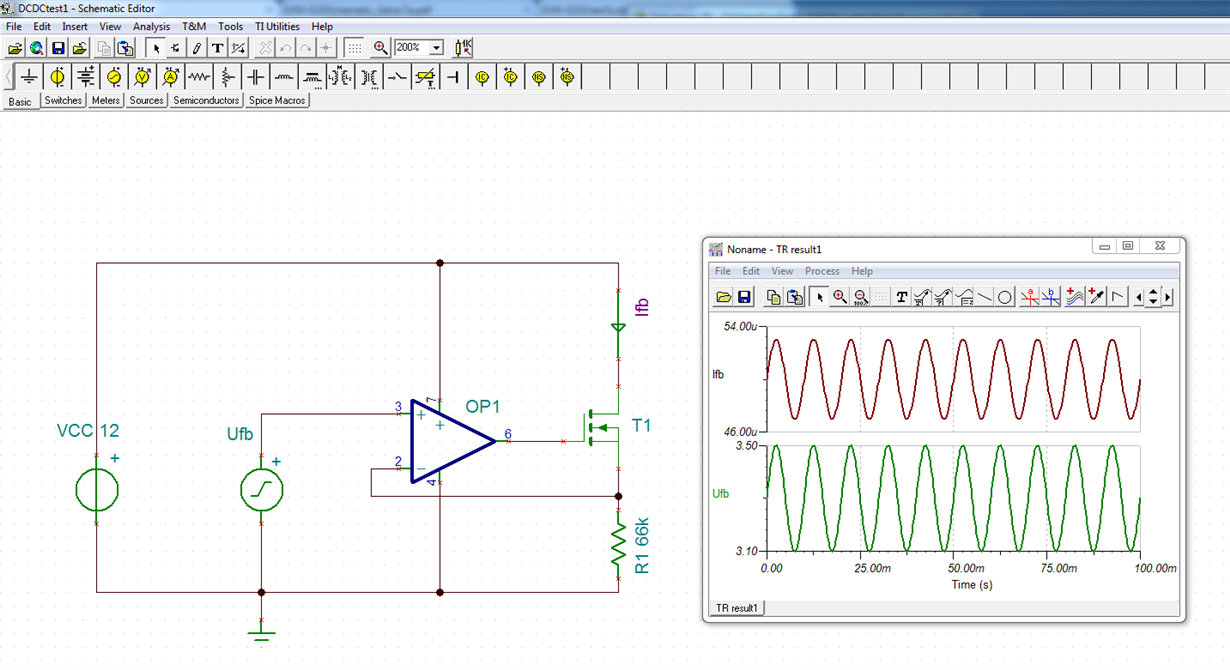
Because I can't find a feedback current I_FB, which
corresponds to "no deviation" (I've assumed 50uA
in my simulation), I suppose, I've a wrong idea, how
the UCC256404 works.
Is there a feedback current, which corresponds to "no deviation"?


